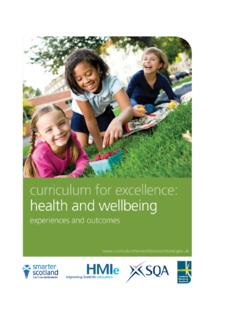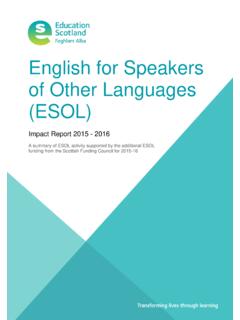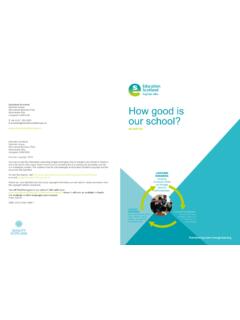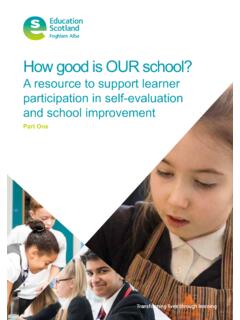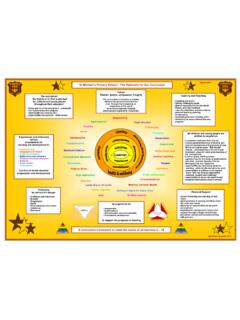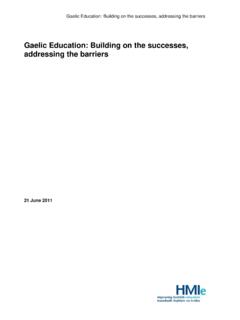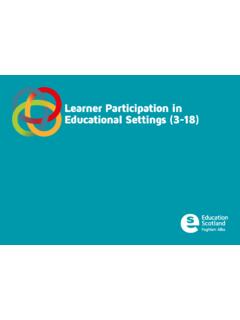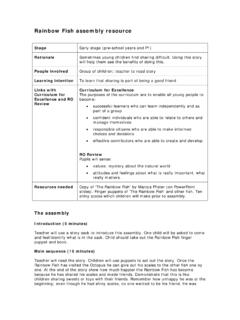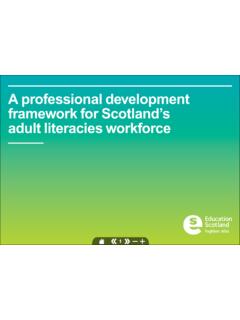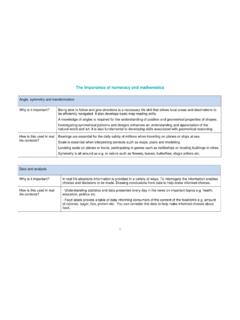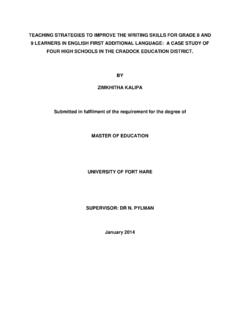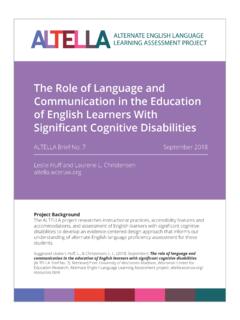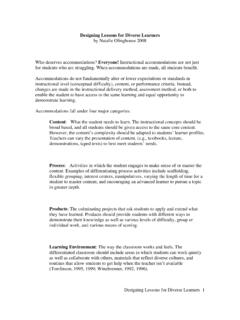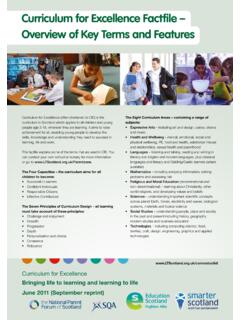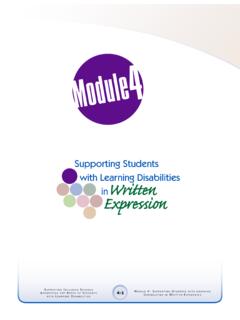Transcription of Milestones: Supporting learners with complex additional ...
1 Milestones: Supporting learners with complex additional support needs Updated September 2019 to include aspects of Health and Wellbeing 2 | Milestones: Supporting learners with complex additional support needs Structure of this resource Section 1: Guidance for practitioners .. 3 Background .. 3 What are complex additional support needs ? .. 3 Understanding the Profile of learners .. 4 Theoretical Frameworks of Development .. 4 Section 2: Milestones overview and Supporting resources .. 6 Purpose .. 6 Principles .. 6 Key messages.
2 6 Learner support and Engagement .. 7 Reporting progress .. 9 Section 3: Foundation Milestones (to include aspects of Health and Wellbeing) .. 10 Notes: .. 12 Section 4: Literacy & English Milestones .. 14 Section 5: Numeracy & mathematics Milestones .. 18 Section 6: Appendices and Acknowledgements .. 21 Appendix 1 .. 21 Acknowledgements .. 22 3 | Milestones: Supporting learners with complex additional support needs Section 1: Guidance for practitioners Background In 2017, Education Scotland published Benchmarks within all curriculum areas for Early through to Fourth level of Curriculum for Excellence.
3 The purpose of these benchmarks is to provide clarity on the national standards expected within curriculum areas at each level while setting out clear lines of progression, and to support consistency in teachers and other practitioners professional judgements. Curriculum for Excellence (hereafter referred to as CfE) aims to provide a coherent, flexible and enriched curriculum from 3 to 18 firmly focused on the needs of the child and young person. Children and young people with complex additional support needs are a wide and varied group of learners who often require adaptations to the curriculum.
4 Practitioners need a more nuanced understanding of how they learn in order to track their progression in a meaningful way. Some learners with complex additional support needs will be able to make progress within or through Early to Fourth level of CfE. However, for others progression will be at a pre-early level. Education Scotland has co-produced with practitioners milestones and accompanying guidance in order to: support the tracking of progression for learners with complex additional support needs who are working at a pre-early level; and promote consistency of language used in reporting progress.
5 The terminology of milestones is used throughout this guidance and progression frameworks for a number of reasons:- milestones are important points in learners development and demonstrate progression; learners who are not able to achieve any of the benchmarks within the early level of CfE still require tracking and monitoring of their progression. It should be recognised that although many learners will move on to work at CfE early level, some learners will continue to progress within this pre-early level throughout their school life.
6 These milestones and guidance are not intended to provide an alternative curriculum. Wherever possible, planning for learners with complex additional support needs should continue to be based on CfE Experiences and Outcomes. Indeed the CfE Experiences and Outcomes are helpful in providing the contexts for learning for children and young people working at pre-early level. What are complex additional support needs ? A child or young person who has additional support needs arising from one or more complex factors or multiple factors (needs that are likely to continue for more than a year) is deemed to have complex needs.
7 4 | Milestones: Supporting learners with complex additional support needs However, a rigorous, clearly bounded and universally accepted definition is extremely difficult to formulate because of the multiplicity of factors and the impact of specific contexts in different local authorities. For that reason, the National Strategic Commissioning Groupi1 is using a working description rather than a definition of children and young people with complex additional support needs. These milestones and accompanying guidance refer more specifically to learners with complex learning needs who are specifically working at the pre-early level.
8 Understanding the Profile of learners In order to support learners with complex additional support needs, practitioners require an understanding both of typical learning development and of the curriculum. The atypical development of some learners with complex additional support needs means that they will not always progress through their learning in a linear or straightforward way. Practitioners need an in-depth knowledge of the children and young people with whom they work to ensure that they are able to identify development and progression when it occurs.
9 A comprehensive assessment of children and young people s health, physical and sensory needs will support the identification of progression when it occurs. Maslow s hierarchy of needs2 highlights the basic needs that apply to all learners . For learners with complex health and care needs, careful consideration should be given to planning in order to enhance readiness for learning. Understanding the health needs and sensory profile of a learner can help staff to optimise the learning environment for them. Knowledge of a child s sensory preferences, such as what they seek and what they avoid, can enable adaptation of the environment, routines and activities to better suit their needs.
10 For example, knowledge of any sensitivity to touch, sound, light, taste and even movement, and an awareness of what they need within their day to help them regulate; for example, movement, proactive touch experiences or sensory play could significantly improve the child s comfort and ability to learn. This may require specialist assessment and support of staff from within the local authority or Allied Health Professionals as outlined in the Getting It Right For Every Child framework. Theoretical Frameworks of Development There are several pathways of learning, drawn from a theoretical understanding of development3, which can inform the practitioner s understanding when working with learners at very early stages of development.
